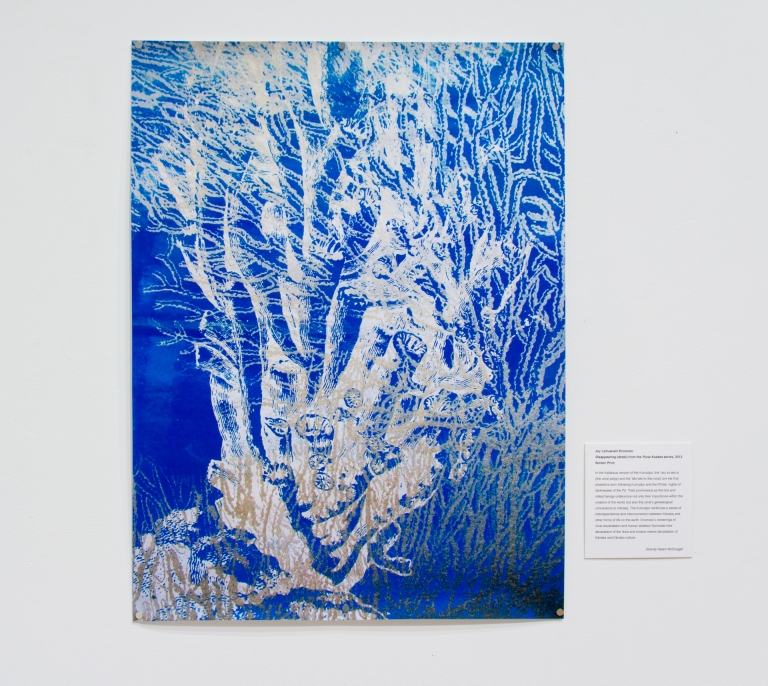Contributor: Brandy Nālani McDougall, Poet and Assistant Professor of Indigenous Studies, Department of American Studies, UH Mānoa.
The Hawaiʻi State Quarter
The quarter is an everyday object we may see and hold everyday. Yet, many don’t think of how the Hawaiʻi quarter, part of the U.S. Mint’s 50 state quarters program, reifies the illegal occupation of Hawaiʻi by the U.S. In appropriating Kamehameha I’s image, the quarter affirms the inevitability of U.S. and continental imperialism, while borrowing and corrupting Kamehameha’s conceptualization as well as a realization of a united and sovereign Hawaiʻi.
The design features the appropriated state motto, “Ua Mau ke Ea o ka ʻĀina i ka Pono” in all caps and Kamehameha I stretching his hands towards only the eight major Hawaiian Islands, thus reducing his Hawaiian Kingdom from 12 to 8 islands. What has become the state motto was first said by Keauikeaouli, King Kamehameha III, when internationally recognized sovereignty was restored to Hawaiʻi after what is known as the Paulet Affair. Often translated as “The life of the land is perpetuated in righteousness,” the motto should be understood as “The sovereignty of the land is perpetuated in righteousness.” Though clearly Hawaiian, the images & text appear to belong to the U.S. by virtue of the quarter being U.S. currency.
-Brandy Nalani McDougall

Joy Lehuanani Enomoto
Disappearing (detail) from the Puna Kuakea series, 2013
Screen Print
In the Kalākaua version of the Kumulipo, the ʻuku koʻakoʻa (the coral polyp) and the ʻākoʻakoʻa (the coral) are the first ancestors born following Kumulipo and the Pōʻele, nights of darknesses of the Pō. Their prominence as the first and oldest beings underscore not only their importance within the creation of the world, but also the coral’s genealogical connections to Kānaka. The Kumulipo reinforces a sense of interdependence and interconnection between Kānaka and other forms of life on the earth. Enomoto’s renderings of coral exoskeleton and human skeleton illuminate how devastation of the ʻāina and moana means devastation of Kānaka and Kānaka culture.
-Brandy Nalani McDougall
